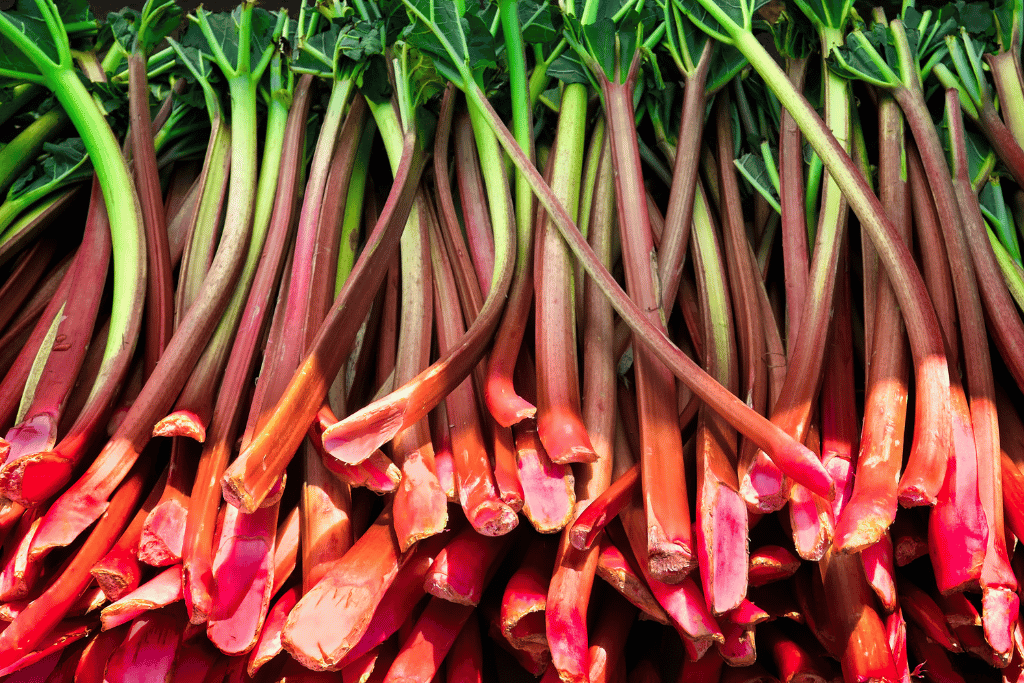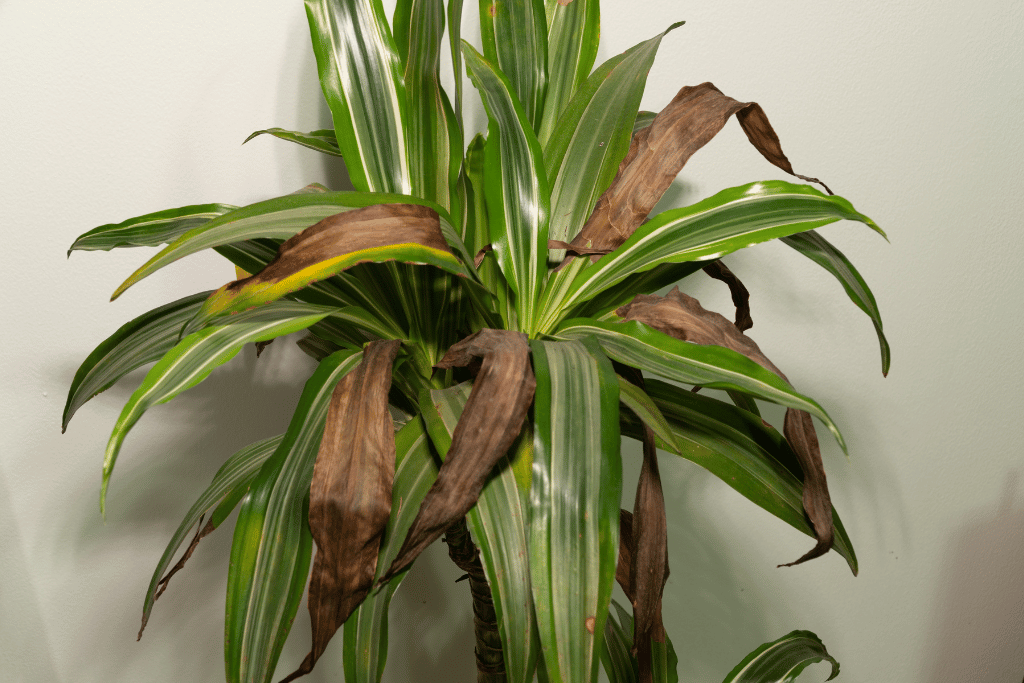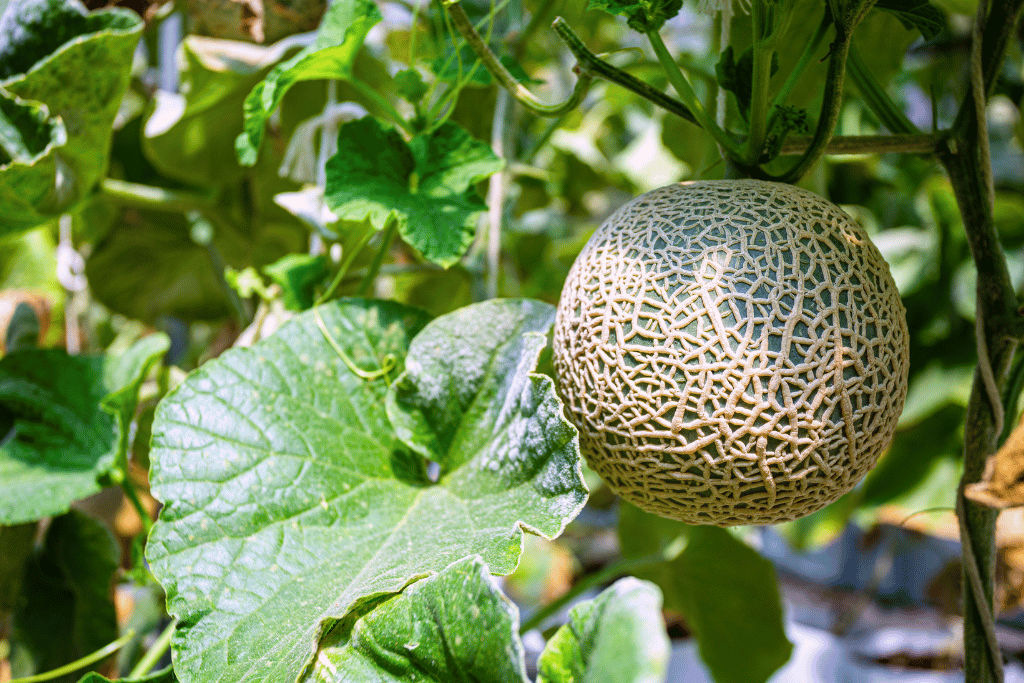
A bloody mary isn’t the only way to enjoy horseradish among a fusion of vegetables.
The root known for its strong punch is actually more of a friend than foe in the garden.
Read on to learn how to spice up your gardening life by companion planting with horseradish!
Horseradish as a Powerful Companion in the Garden
An easy root to grow and maintain, horseradish will lend its services to any garden space. It works well as a companion plant for a few reasons.
- The strong root system of horseradish can help to loosen and aerate compacted soil.
- Large leaves of horseradish keep the soil shaded and cool, reducing moisture loss.
- Horseradish contains an oil called isothyocyanate. This oil has antibacterial and antifungal properties that can help build a defense for plants susceptible to disease.
- The pungent smell and presence of this oil deters all sorts of pests, small and large.
- Harmful insect infestations are known to spread disease. By completely deterring most pest populations, horseradish protects crops on multiple fronts, leading to an overall healthier yield.
- Healthy produce leads to healthy gardeners. Horseradish has medicinal properties much like other root crops, namely garlic, ginger and turmeric.
Now that we have established the value of horseradish as a companion, let’s find out just which plants benefit the most with its camaraderie.
Potatoes
For most root vegetables, horseradish is a godsend. Potatoes in particular suffer from multiple pests, blights and diseases. All of these issues can be remedied by growing horseradish nearby.
Horseradish will ward off common pests like potato bugs, potato beetles, aphids, blister beetles caterpillars and whiteflies.
Be wary of the invasiveness of horseradish. Plant it in the corners of the garden and keep a close watch. It tends to spread and could possibly overtake the potatoes’ underground real estate. Horseradish is a bit of a bully.
Its aggressive growing is the only real drawback which can be easily controlled with attention and care. If you’re not confident that you’ll be able to stay on top of it spreading, plant the root into containers and post them in different spots among your potatoes.

Fruit Trees
All types of fruit trees are favorite targets of every imaginable pest. Any assistance in preventing the constant bombardment of insects, animals, fungus and bacteria is more than welcome. Especially if it is of the natural, organic type, which is all too uncommon in modern day orchards.
Pests like aphids and mites typically leach off fresh new growth of fruit trees, which can be extrememly annoying. They damage and stunt the tree’s growth and fruit production. Horseradish planted at the base of the tree will act as a potent pest repellent, driving off these harmful insects and more.
Small rodents like voles and field mice will be severely put off by the strong odor of horseradish. Mice are infamous for chewing at the bark of trees and making nests among the limbs and snatching young fruit before it gets the chance to ripen. The pungent root turns out to be the perfect solution.
Additionally, fungal diseases like scab and fire blight, among many others, are troublesome afflictions fruit trees are forced to face. Surrounding your trees with horseradish will add a layer of protection from these detrimental diseases.
When you grow your own horseradish, you can make it into an antifungal spray. Blend up the roots until it’s paste like, then mix 1 part horseradish in 4 parts water. Let it sit for a day and strain off the liquid and mix it into a quart of water and a half cup of vinegar. This spray will work wonders on fruit trees, and all plants for that matter, destroying and deterring most pests and diseases.

Asparagus
Horesradish is a trusty ally alongside asparagus. Plant the pungent root in between rows of your perennial asparagus crop. It will drive off aggravating pests like asparagus aphids, asparagus beetles, cutworms, asparagus miners and grasshoppers. Horseradish can be allowed to spread a bit after asparagus is harvested in the spring, just don’t let it take over completely.

Strawberries
Growing so close to the ground, strawberries are vulnerable to numerous pests. They don’t even have to be particularly sly or crafty insects, slugs, rodents or birds to terrorize the lush low-lying berries. Strawberries are like a red juicy, sweet target.
That’s where horseradish comes in. Keep containers of horseradish situated around your strawberry patch or intersperse a few roots in the bed to really get the full effect. Be careful that the horseradish doesn’t take over the bed; then again, strawberries are aggressive growers and should be able to effectively hold their ground.

Rhubarb
The sour stalks of the familiar perennial spring crop are glad to make a companion of horseradish. The roots of horseradish will help prevent soil-borne fungal diseases from spreading into the crowns and stalks of the rhubarb plant.

What NOT to Grow Near Horseradish
As we’ve already discussed, horseradish can be a bit pushy and intrusive, even with the plants it helps. It also draws in some pests that could negatively affect other plants. Here’s a short list of plants that you should keep away from horseradish.
Brassica Vegetables
One pest that troubles horseradish is the white cabbage caterpillar, a primary pest of brassica vegetables. Plant horseradish as a trap crop far away from cabbage, broccoli, cauliflower, Brussels sprouts, kale and kohlrabi. You don’t want to potentially attract this destructive pest to your brassica crop.
There are lots of options when it comes to fortifying your brassica vegetables, give dill a try!
Radish and Turnip
These fast growing root crops will find horseradish too much to handle. Although turnip and radishes are ready for harvest in a short amount of time, the aggressive horseradish root can disturb their growing space.
Helpful Horseradish
So the next time you’re enjoying a spicy cocktail sauce remember horseradish as a helpful garden companion.
Consider planting it among some of your more vulnerable crops.
It’s benefits far outweigh its drawbacks and the pungent horseradish root will surely protect the premises with its powerful essence.

Frequently Asked Questions (FAQ)
Where is the best spot to plant horseradish?
Horseradish roots and their greens will grow best in a full sun location. The soil should be organically rich and well-drained. Avoid rocky and otherwise poor soils.
Can horseradish be left in the ground over winter?
Harvest the amount of horseradish you think you’ll need for consumption for the winter and spring seasons. The rest can be left in the ground to overwinter as long as your region has cold winters with below freezing temperatures. It can be harvested again in the spring before it perks up from winter dormancy. Once new growth begins to push up, let it resume growing to reestablish.
How long does it take to grow horseradish?
Horseradish requires about a year of growth before it should be harvested. Plant it early in the spring and plan on harvesting it the same time of year the following season.
How can horseradish be stored during winter?
Roots that are going to be used for planting next season can be dug up in the fall and stored in the refrigerator. Put the roots into loosely fitting plastic bags to prevent them from drying out. They will keep for 6-8 months.
Can you eat horseradish leaves?
The leaves of horseradish are edible and have a bitter, peppery flavor, similar to arugula. They can be eaten raw or cooked.
What are the health benefits of horseradish?
Horseradish promotes cell growth and helps detoxify the body. It has antibiotic properties which can alleviate the symptoms of throat and respiratory infections.



